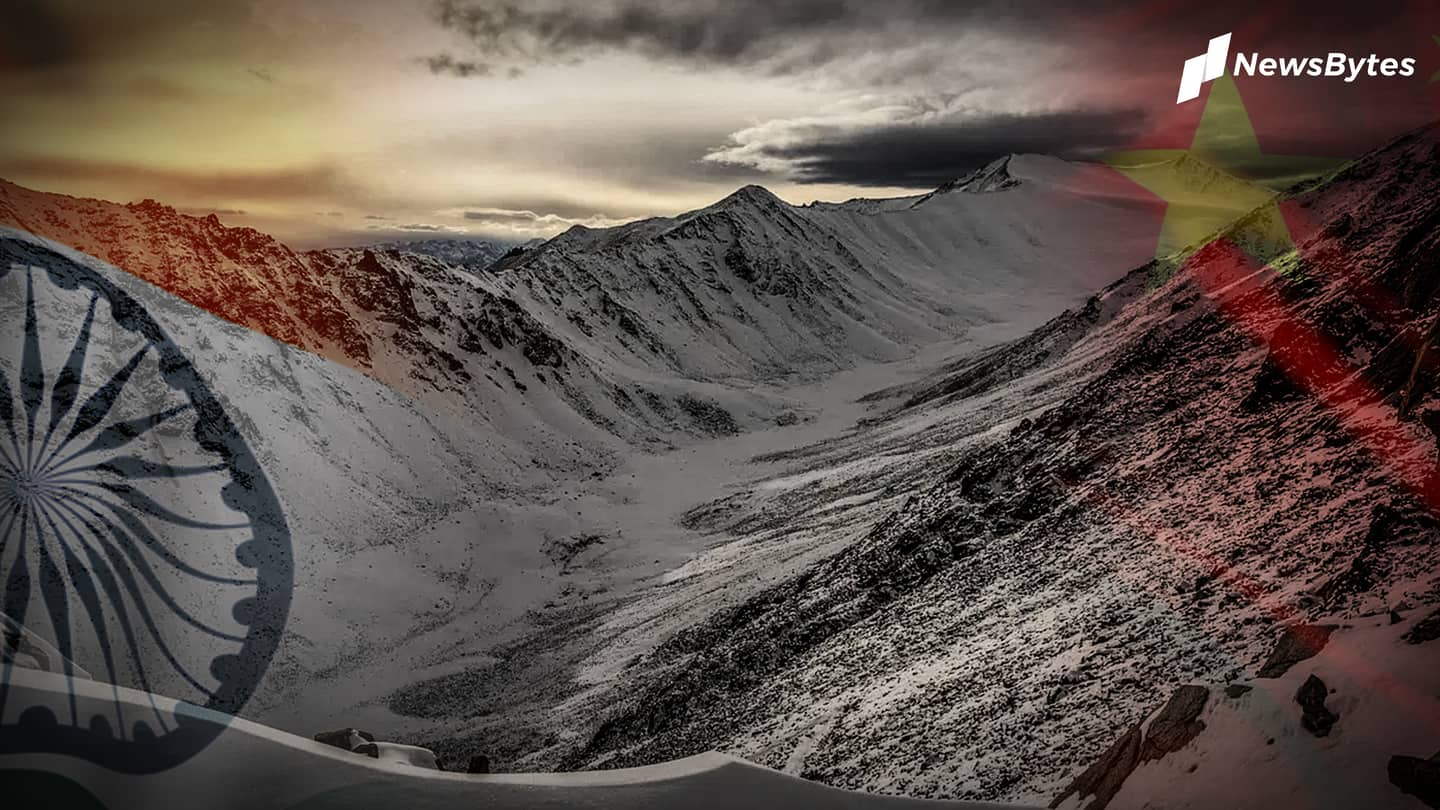
Galwan Valley: What is its strategic importance for India, China?
What's the story
The showdown in Galwan Valley has angered India, for the sheer brutality with which Indian soldiers were attacked; piqued global interest, as two nuclear-armed neighbors have escalated tensions; and sparked a narrative war.
The martyrdom of 20 soldiers reminded Indians of the long-forgotten tussle with China, dating back to the 1960s.
As Galwan Valley hoards limelight, let's tell you about its importance.
Location
The important location has uninhabitable conditions, complete with sub-zero temperatures
Located about 17,000 feet above sea-level, Galwan Valley is mired by extreme weather conditions and sub-zero temperatures.
The area also ensconces Galwan River, which originates from Aksai Chin and meets Shyok River, an important tributary of the Indus River.
Aksai Chin is essentially an Indian territory but is administered by China.
Notably, LAC is clearly defined (and accepted) by both countries at Galwan Valley.
Name
Galwan River is named after an explorer who helped British
Interestingly, the 80-km long Galwan River is named after an adventurer from Ladakh, who helped many European explorers in the 19th century.
He was a crucial figure in the Great Game, the name given to Britain and Russia's military and diplomatic confrontation.
Ghulam is believed to have helped Britishers navigate the tough terrain at a time when Russia was keen for expansion towards Tibet.
Road
History lesson: Galwan was a triggering point during 1962 war
As is known, the Indo-China conflict isn't new. In fact, before the 1962 war, the Valley became a flashpoint after China constructed a road between Xinjiang and Tibet, without India's consent.
The highway is now known as G219. After building the road, the Chinese lay a claim to the area, first in 1959, and then in 1962.
The second claim included parts of Eastern Ladakh.
Decision
Anticipating trouble, Nehru wanted to fortify Galwan Valley
Perhaps aware of the Chinese intention, India's first Prime Minister, Pandit Jawaharlal Nehru, agreed on the plan to fortify Galwan Valley.
In response, China took to force. On July 6, 1962, China surrounded a Gorkha Regiment in the area, cutting their ties with Samzungling posts in the lower altitudes.
After the end of the war, China occupied more land than its earlier claims.
Letters
Displeased with India's actions, China also played victim card
While its army attempted to corner India, China cried victim through letters. On July 23, 1962, Peking (which later became Beijing), claimed Indian soldiers crossed over and fired. It also said bloodbath was avoided due to Chinese "self-restraint".
Thereafter, India replied on July 26 that China was misinformed. It had been taking an aggressive stand, Delhi told China in a more diplomatic language.
War
Despite communication, tensions continued. Then, 1962 war started
Diplomatic communication notwithstanding, the tensions continued.
On October 4, according to Shiv Kunal Verma's book 1962: The War that Wasn't, 5 Jat's Alpha company under Major SS Hasabnis were flown to the post, to relieve the Gorkhas, stationed there for weeks.
Shockingly, on October 20, the Chinese opened fire indiscriminately, killing more than 36 Indians, and taking an injured Hasabnis prisoner.
War had officially started.
Construction
After "calm decades," blood flew through Galwan Valley again
Now, the latest escalation was sparked by India's infrastructure push. Over a decade ago, the Border Roads Organization (BRO) started work on a road connecting Daulat Beg Oldi (DBO) with Darbuk and other Leh roads.
The DBO is the north-eastern part of Ladakh, which also marks Indian presence in Aksai Chin region.
The Chinese opposed this, foreseeing India's upper-hand if a conflict arises.
Time
India wants to construct road to help reduce travel time
This particular road runs parallel to LAC and extends to Karakoram Pass' base. The biggest advantage is that it will reduce travel time from two and a half days to merely 5-6 hours, between Leh and DBO.
Meanwhile, China also constructed a complicated road till the middle of Galwan Valley, extending it close to LAC. Small posts were created as well.
Tensions
The situation has been strained since May
The relations nosedived in May this year, when India continued with the project, ignoring China's protests. Moreover, on the bridge over the Galwan nallah, the construction picked up the pace.
To diffuse tensions, both the armies spoke on disengagement on June 6.
It was concluded that the Chinese would retreat, but they attacked Indian troops instead. The country lost 20 bravehearts to mindless violence.
Clash
Indians and Chinese fought without arms in unprecedented episode
The 1996 and 2005 agreements, as External Affairs Minister S Jaishankar pointed out in a tweet, specify that firearms can't be used in a clash. Hence, soldiers indulged in hand-to-hand combat, where the Chinese used wooden logs pierced with nails, rocks covered with barbed wires, and boulders.
They also threw Indian soldiers into the icy-cold river. Some had to be fished out.
Veterans
Word of caution from veterans: Don't trust China
While news channels are blaring with a call for revenge, India took a calculated approach. It launched talks at several levels.
Meanwhile, veterans of the 1962 war suggested carefulness. Air Marshal BD Jayal (retired) said China sees itself as a superpower, wanting to suppress India. And Havildar Karan Singh opined China can't be trusted ever.
So, will India finally rein in the dragon?